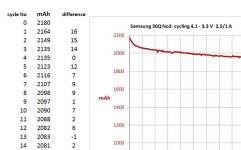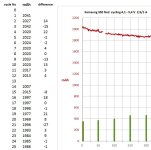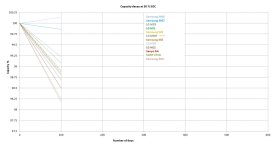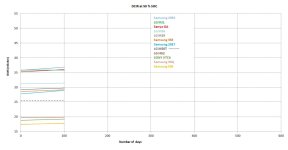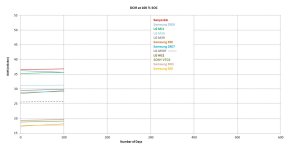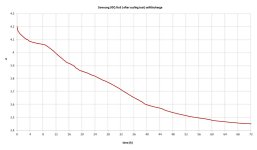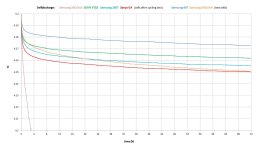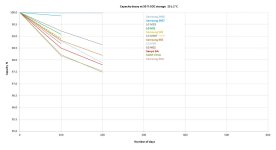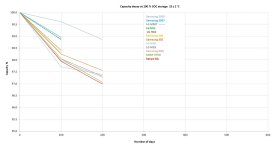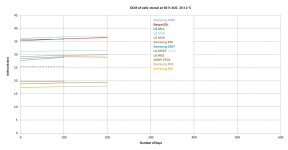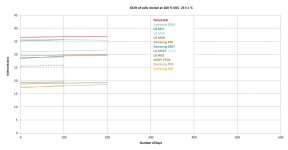Pajda said:I think that most significant issue with this particular test is a ZKETECH EBC-X0510 accuracy (stability).
Second issue is temperature stability.
Percentage values used only to help differ the lines at 100% SOC.
Yes, I know that temperature variations and ZKETECH are two obstacles to accurate measurement. I declare 25 ± 1°C but trying to have better range, something like 25,3 ± 0,5°C. Of course, your 0,1°C range is ideal.
Because charging is CC/CV, I believe that final voltage 4,2 V and cut-off current 0,1 A accuracy/repeatability is relevant more than 1 A charging current real value. More significant is temperature because it affects ability of Li-ion cells to absorb delivered charge. And of course temperature is influencing measuring during discharging. Temperature variation is probably mostly issue for high capacity cells (M36, 35E, GA) while high power cells (HG, VTC6, 30Q) probably suffer typical high capacity decay at the first cycles.
One would assume more variety of results if ZKETECH effect is really significant. Or the deviation is stable. ZKETECH and temperature bias will be less significant in each another measurement.
As we can expect gradual slowing down of the capacity decay, it is not unrealistic to be somewhere between 95 – 98 % after 8 months (240 days).
Pajda, how is average monthly capacity fade 2 – 4 mAh consistent with M36 95,4 % capacity after 8 months (i.e. 156 mAh fade) ?


